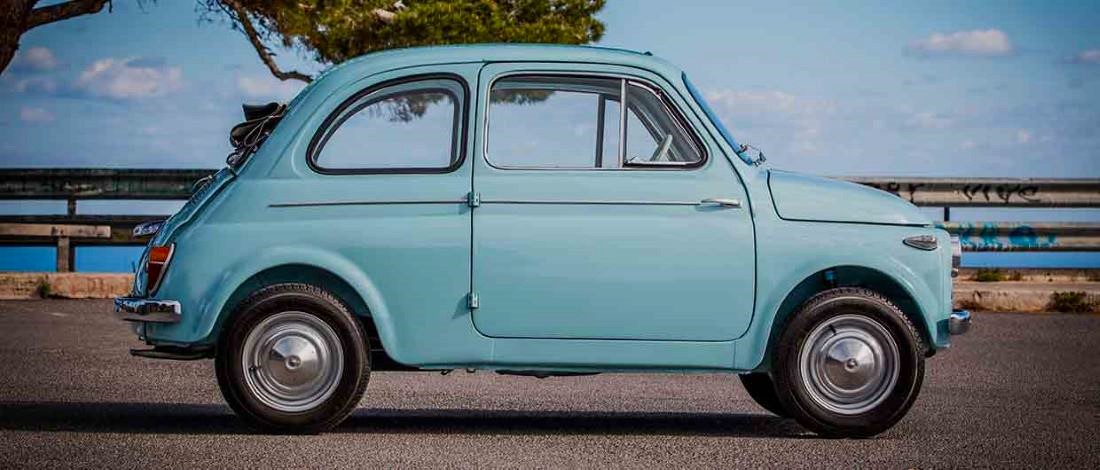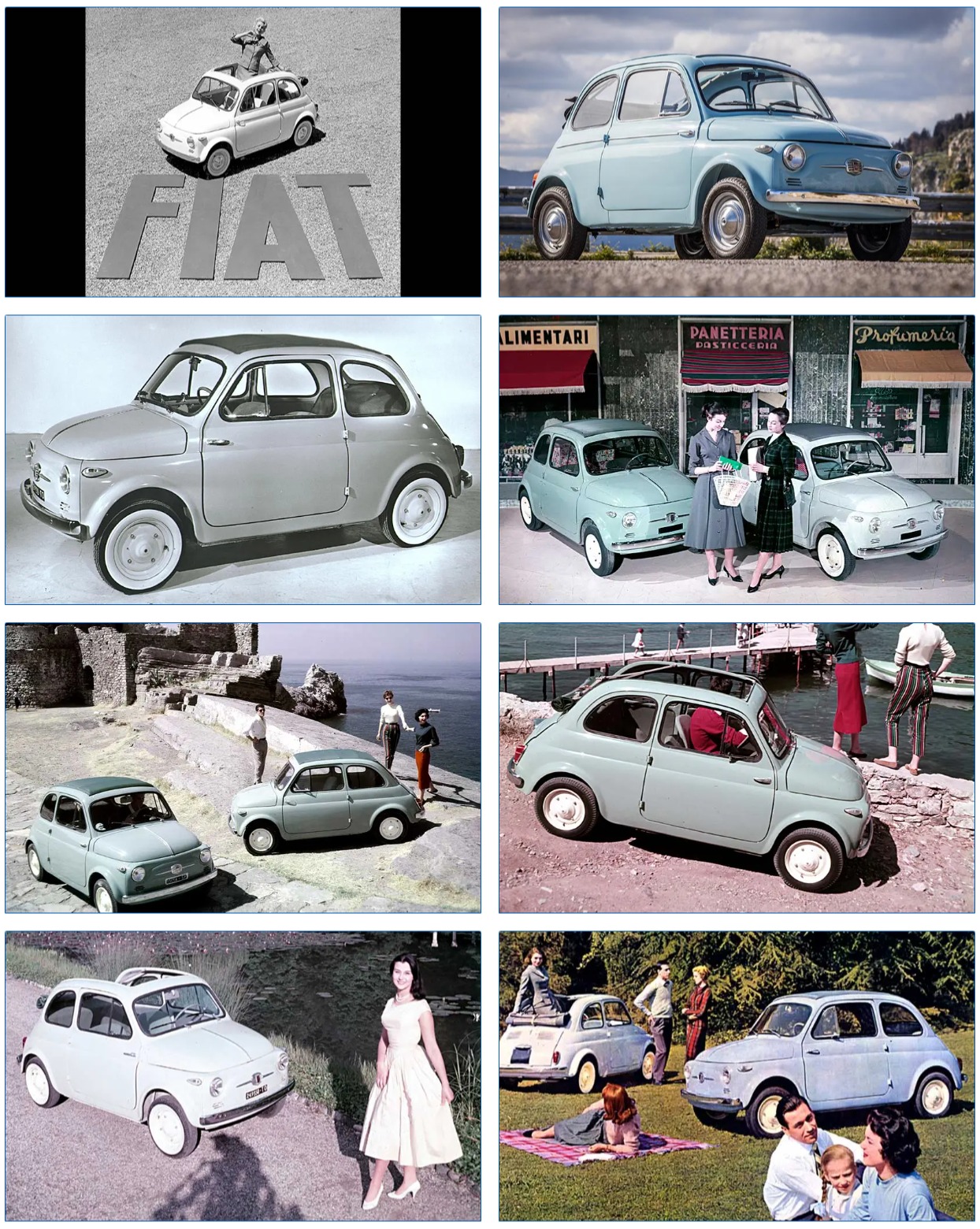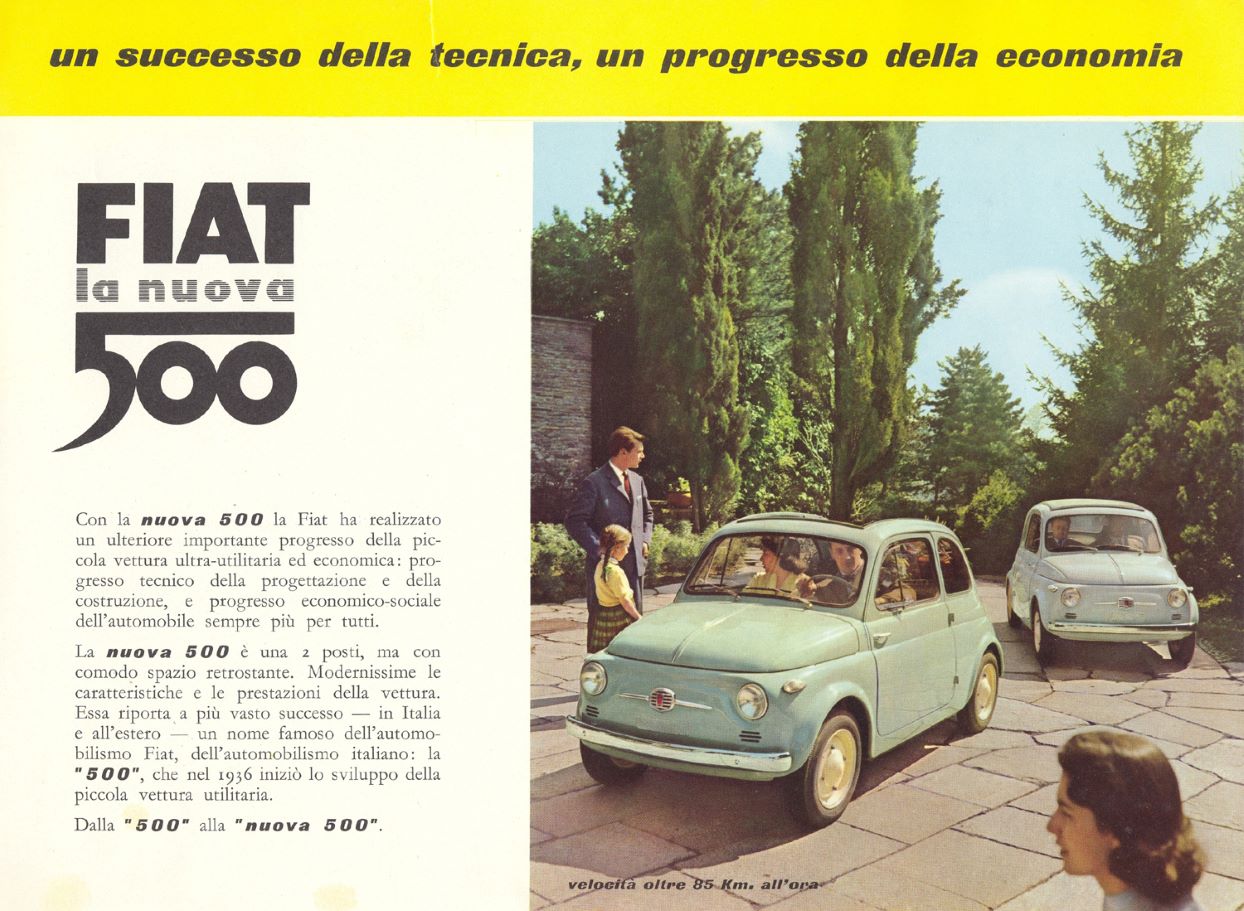
The Fiat Nuova 500 was “the right car at the right time,” and on July 4, 1957, the hatchback marked the rebirth of FIAT and its product range. Exactly 3,893,294 examples of the historic Cinquecento were built between 1957 and 1975, helping to provide an attainable car for Italians and numerous other Europeans. After 18 years of production, the last Fiat Nuova 500 was built on August 4, 1975, at the SicilFiat plant in Termini Imerese (Palermo, Sicily).
On the 4th of July 1957, Fiat presented the heir to the “Topolino”: the Nuova 500 was an all-purpose utility car, small and more economical than the Fiat 600 which by then had been filling Italy with new motorists for two years: between the two, they would change the history of motoring.
1957 was a profoundly important year for Europe and beyond: on the 25th of March, in Rome, the treaty establishing the European Economic Community (EEC) was signed. While Europe was reshaping its future, the Soviet Union launched the first satellite in history into orbit: the Sputnik. In this future-looking context, on the 1st of July Fiat gave the Prime Minister in Rome a preview of the heir to the glorious “Topolino”, as the 500 was nicknamed (in English translated as “Mickey Mouse”): the Nuova 500. A few days later, on the 4th of July, 1957, the car was presented to the public: dozens of 500 models paraded through the streets of Turin – accompanied by eye-catching flesh and blood models – on a journey from the Mirafiori factory to the historic city centre.
The idea of replacing the previous 500 had been hatched in Turin a few years earlier, while all resources were being concentrated on the 600, launched in 1955. The Fiat President, Vittorio Valletta, decided to place an even smaller car alongside the 600, so cheap that it could be purchased at a price close to a labourer’s annual salary: the new pair would go on to write the history of mass motorisation, in Italy and beyond.
The name Nuova 500 was chosen in order to create a bond with the previous Fiat 500, better known with its “Topolino” nickname, despite being entirely different. The technological innovations were mostly based on the experience and success of the 600: from self-supporting bodywork to independent suspension. The rear echoed the curved lines of the 600, and a more modern front bonnet also covered part of the mudguards, which no longer connected only with the headlights. A canvas roof covered the entire cabin area, and the doors opened ‘upwind’.
The engineering had to be simple, so that maintenance costs would also be contained: for this reason, after several experiments, Dante Giacosa had chosen a highly original air-cooled twin-cylinder engine placed at the rear. An initial displacement of 479 cm3 delivered 13 HP at 4,000 rpm producing a maximum speed of 85 km / h.
FIAT NUOVA 500 N NORMALE – 1957
- ENGINE….2 cylinders in line, overhead valves, side camshaft, air cooled, rear longitudinal 479 cm³
- POWER….15 HP @ 4.000 rpm
- SPEED….90 km/h
- WEIGHT….470 kg (dry)
- DESIGN….Fiat
- TYPE OF BODY….Sedan 2 doors, 4 seats
The launch was not immediately successful, due in part to the craze for the 600, but after a few adjustments to the standard fittings and the price list, sales soon boomed.
Initial market reaction to the Nuova 500 – also known as the 500 N – was less than spectacular: the new car was overshadowed by the success of the 600, perhaps due in part to its spartan set up, and also because it was registered as a two-seater car. Fiat, however, quickly made amends and inserted a padded rear seat so that the car could be registered as a four seater. Many new details contributed to the success of this new set-up: from the window-opening mechanism to the device for blocking deflector movement, to the chrome enhancing the bodywork and the aluminium wheel covers. As a result, the Fiat city car found itself on the right path and assumed a more assertive personality, confirmed by the appearance of the Nuova 500 wording on the bonnet.
On the mechanical side, significant interventions included an increase in the compression ratio, a new camshaft and a different carburettor, increasing power to 15 HP and maximum speed to 90 km/h. The price of the initial version was reduced, keeping its price list status as “Economica”, while the enhanced and enriched version (labelled “Normale”) made its debut at the 39th Turin Motor Show on 30th October 1957, while maintaining its previous launch price of 490,000 Lire.
A few months later, in mid-1958, Fiat introduced the Nuova 500 Sport. Here, the displacement rose to 499.5 cm3 and the power to 21.5 HP, thanks to which it topped the 100 per hour milestone at 105 km/h, reached thanks to the adoption of a longer axle ratio. The 500 Sport had a rigid roof and two-tone bodywork. Success in racing came with the first four places in the 500cc class at the Hockenheim 12 Hours in May 1958, but spectacular sporting success had already arrived in February: with the help of Karl Abarth. In seven days on the Monza circuit, a New 500 fitted with Abarth modifications had crushed all speed and duration records in its category, demonstrating the sporting qualities and robustness of the New 500 but… that’s another story!




You must be logged in to post a comment.